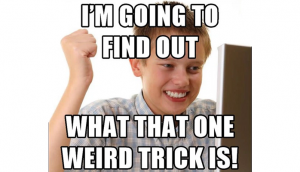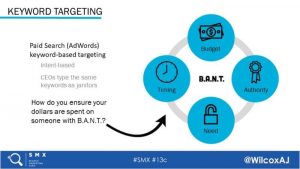What is partner-lancing?
Here’s why some freelancers say partnering up can help them cut costs, be more efficient, and produce better work.
BY Sara Gaviser Leslie and Miriam Stone
The rise in freelancing wasn’t just a COVID trend. According to Gartner, by 2025, independent workers will make up between 35% and 40% of the global workforce.
But despite its popularity, being a freelancer can be tough—especially in a creative field. You often have no one to bounce ideas off of, ask for help when you get overwhelmed, or lean on when business is slow.
The other obvious alternatives to having a more solitary career—committing to a business partner or building up a team—can feel constricting. Us freelancers often chose solo careers for independence and freedom. Why would we assume responsibility for—or answer to—anyone else?
Fortunately, there is a structure that combines the best of partnership without the responsibility and commitment of a more formal arrangement. We call it “partner-lancing,” and we’ve been doing it successfully for the last several years.
What is partner-lancing?
When two people partner-lance, they agree to combine their efforts on many fronts, save costs on some services and administration tasks, and augment each other’s skills and capacity. Think about it like living with someone before getting married or combining two households but keeping separate bank accounts.
We believe partner-lancing is a model that works especially well for women, for whom being a solopreneur can be an especially attractive proposition.
Too often, U.S. business culture promotes growth and value by extracting it from lower-cost labor. Partner-lancing, in contrast, is a collaborative, trust-based, and lifestyle-oriented model for those who care more about maintaining their independence and lifestyle while still getting the benefits of working with others.
Here is a step-by-step guide for how to create a partner-lancing dynamic work for you:
Find your doppelganger
Rather than finding a partner with complementary skills (for instance, strategists partnering with designers, or marketers with product developers), partner-lancing is often best when each partner is similar. It’s about finding someone you trust to provide a similar output, at the same quality, as you would yourself.
We met as freelancers working on a project for the same agency. After partnering on a few projects, we wanted to do it again.
Partner-lancing can mean sharing revenue. However, the tradeoff is that you can share the load with, and bounce ideas off of, someone you trust. If one of us suddenly gets busy, gets sick, or wants to take a (gasp) actual vacation, we have each other’s back.
We don’t share every project. But, more often than not, we want to work together because the benefits outweigh the costs.
Maintain your relationships
We source projects by leveraging our personal networks and by selling and delivering work under each of our respective brands. Whoever wins the business is the client lead and runs the project as she sees fit. It’s entirely up to her to use the other person’s time; she also decides if the partner will be client-facing. We track hours worked and tally up at the end, dividing the fee proportionally by actual time worked.
Throughout many projects, we’ve found that we typically maintain an 80/20 split between the lead and support. We’ve also imbued equity in our setup. For instance, we don’t charge each other a referral fee on the initial transaction. We believe that things will equalize in the end and commit ourselves to the health of the partnership.
Find economies of scale
Once we started working together more regularly, we found many ways to save time and create efficiencies. We started by doubling our business development efforts and by collaborating on a capabilities presentation that we could tailor to our individual pitches. This worked so well that we decided to share the cost of a designer to help us create a standard presentation template that we can easily personalize by switching out our logos. We did the same with an online whiteboard tool.
Now we have a robust library of slide and workshop templates that we can each customize and use as needed. That way, when we need to jump in to support each other, we already have a shared way of working so there’s no time spent training or explaining our methodology. We now co-develop and share templates for everything: client presentations, frameworks, case studies, scopes of work, estimates, and more.
Divvy up the grunt work
While we share similar skill sets, on the operations side, we have slightly different strengths. We easily divvy up the non-billable “grunt work”. Miriam gravitates towards creating processes and templates while Sara enjoys developing marketing strategies.
By divvying up grunt work based on each partner’s strengths and interests, you can make sure that your partnership pays off for each individual.
Hold each other accountable
When you’re a freelancer, no one checks if you’ve fallen behind on a deadline. Instead of updating each other on our individual goals, we share our pipeline and marketing goals. We hold a standing meeting every two weeks to update each other on progress. This keeps us focused on future business and gives each other visibility if we plan to take on a project that requires the other person’s help.
We also plan longer in-person meetings quarterly, where we can take our time to work through our list of longer-term projects, take stock of how things are working, and think about the bigger picture—usually over a hike or a relaxed dinner.

By holding each other accountable, freelancers can assure that you and your partner stay on track.
Take it slow
Like any relationship, we had to form a foundation of trust, generosity, and honesty first. From the beginning, we’ve shared our concerns and feedback right away with each other. We consciously took things slow, working together on one project after another for nearly two years before deciding to combine forces. Even now, we’ve chosen to keep our individual LLCs and agency names. We’ve considered combining into one agency—and may still someday—but, for now, partner-lancing is the best of both worlds.
ABOUT THE AUTHORS
Fast Company
(11)
Report Post






